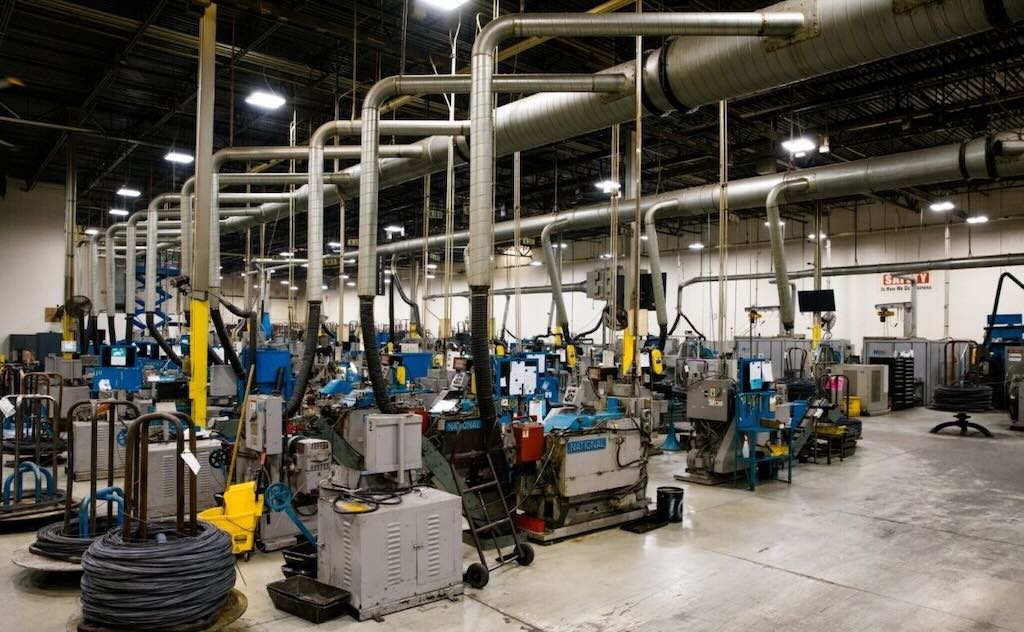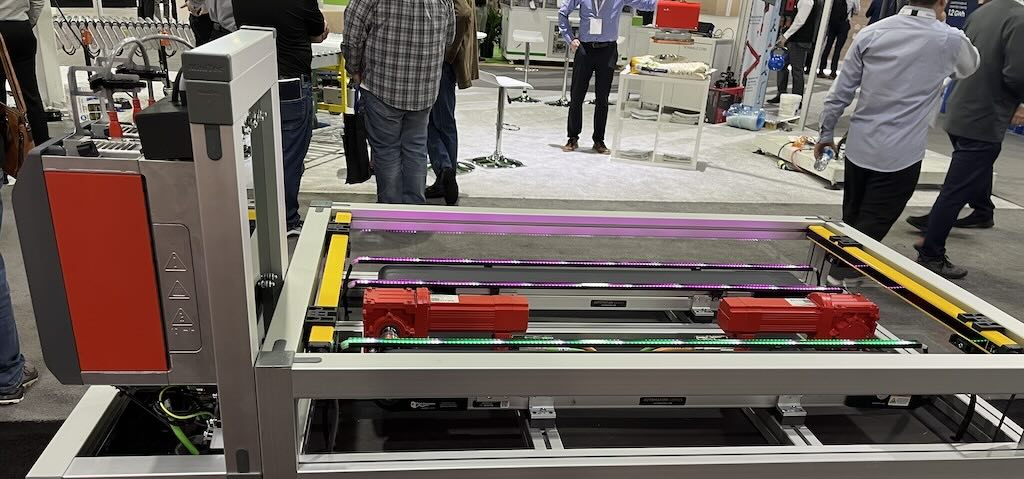A properly optimized unit can recover 95% of the normal paraffins in the feed.
As refineries seek efficiency, asset utilization is a high-profile metric. However, it is still common to view efficiency and utilization solely in terms of raw feed and saleable product. Intermediate processes, especially robust and stable processes, are too often overlooked. Not evaluating a process because it is not failing or not a marquee unit is a missed opportunity that can lead to lost revenue. Gasoline Molex provides an example of such a process. An integral octane upgrade process that feeds into the final gasoline pool,
Gasoline Molex can be overlooked simply because it is a reliable process that continues to run with minimal attention. However, not optimizing the process represents lost productivity, efficiency, and ultimately, revenue. Not only does an optimized gasoline Molex unit produce more product in a more efficient manner, but this increased product quality may allow for operating conditions of lower severity in other process units.
Let’s look at some common gasoline Molex operations scenarios and potential benefits of optimization or revamp, including efficiency, production, and maximum profit from existing capital assets.
Robust and valuable
In the 1960s, Honeywell UOP pioneered the physical separation of similarly boiling molecules through the application of Sorbex technologies. This concept was first used to upgrade the octane content of fuels in 1990 with gasoline Molex. Since then, gasoline Molex has proven to be a valuable and robust component in many refineries.
Gasoline Molex increases the octane value of a light naphtha stream by separating lower octane normal paraffins (extract) from other components (raffinate). The higher octane raffinate stream is sent to gasoline blending, while the extract stream is recycled, and combined with a fresh feed stream, returned to an isomerization (Penex) unit. The isomerization unit product is the feed stream to the gasoline Molex.
A new, properly optimized gasoline Molex unit can recover 95% of the normal paraffins in the feed, and typically returns these to an isomerization unit in an 87% pure normal paraffins stream. The removal of normal paraffins increases the raffinate stream octane value, while recycling the normal paraffins for isomerization maximizes the value of the entire stream.
If the recovery of normal paraffins decreases, and more normal paraffins slip out the raffinate stream, the raffinate octane value decreases. Additionally, normal paraffins bypassing the recycle to the isomerization unit represent a loss of potential octane upgrade. As the isomerization unit operates with an equilibrium reaction, the end composition is relatively unchanged while, feed quality effects overall performance.
Feed to the isomerization unit with higher normal paraffin concentration has more potential isomerization of the normal components or more octane upgrade. If the extract stream’s normal purity decreases, this represents a decrease in the potential upgrade of the isomerization unit with additional circulation costs.
Overall, at a constant feed rate, net margin of a gasoline Molex unit is reduced 1% for every 2% reduction in normal paraffin recovery. Observations from typical units operating for 10 or more years can be generalized as a normal paraffin recovery decrease from 95% to 90%, with a corresponding extract purity decrease representing approximately 2.5% of lost net margin.
Typical observations
Gasoline Molex ADS-35 adsorbent and equipment are proven, robust solutions, handling wide operational ranges, feed changes, upsets, and other challenges without permanent damage or reduction in performance.
Gasoline Molex units frequently operate for years without significant modification. However, adsorbent ages and performance factors change. These changes typically happen over a period of years. While different engineers and operators transition in and out of the operating unit, these subtle changes may go unnoticed, though they do have consequence. Thus, there is a need for careful attention—which will be rewarded with improved performance and profit.
Viewed in simple terms, the primary objectives of a gasoline Molex unit are to deliver a higher-octane product stream (raffinate) while maintaining a highly efficient recycle stream to the isomerization unit. As the adsorbent ages, it is more difficult to maintain the performance standards of 95% normal recovery and 87% extract purity. Over the years, the highest achievable values for these parameters may begin to decrease.
At first, these changes are likely small and within production tolerances. Eventually, a single primary factor is typically selected to maintain, while the others continue to decrease. Provided the minimum octane value is achieved, depending on other unit specific factors, a common UOP recommendation is to maintain the extract purity and isomerization efficiency while the recovery decreases.
As the recovery decreases, more normal paraffins slip through to the raffinate stream. Octane values decrease with a small increase in the flow rate. If production is measured in octane-barrels (oct-bbl), the loss is somewhat offset by the flow increase. As performance decline continues, raffinate quality decline outpaces the volume increase with a measurable decrease in oct-bbl production.
A typical response to decreasing oct-bbl production is to increase the fresh feed rate. This is possible, as decreasing recovery results in decreasing extract flow, opening capacity in the isomerization and gasoline Molex units for additional fresh feed. Increasing the fresh feed to the unit can appear attractive as raffinate product oct-bbl values can be maintained, and perhaps increased.
Initial results from this approach will suggest operational adjustments have fully compensated for changing unit performance. However, the need for additional feed and declining net upgrades from fresh feed to final product are not considered.
First case study
Operations and flow rates in a gasoline Molex unit can vary by significant amounts. This may be due to the initial design process, different feed compositions, feed availability, or a variety of other factors. Frequently, multiple variables change between two points of comparison.
For an accurate assessment, a single fixed operating reference must be established, then variables adjusted one by one. Changing individual variables is important to the gasoline Molex unit as variables often have opposing or compounding effects, making a change appear more or less important than it actually is.
To establish a single reference point, a set of primary operating characteristics were identified, and typical values were selected, such as fresh feed rate, fresh feed composition, and isomerization unit size. These values are not intended to be average values, but reasonably represent most operating units. For this evaluation, the typical fresh feed rate was established at 65 T/h.
UOP’s UniSim yield estimate tool was used to adjust the operating variables in a controlled manner and estimate the results. This model assumes the adsorbent chamber control system (ACCS) and other operating parameters within gasoline Molex are optimized, and the unit is operating well.
The first phase examined the slow decline of adsorbent performance with no adjustments. Production simulation done at design performance values established the reference basis. As the recovery decreased, the raffinate product octane value decreased and the extract flow (recycle to the isomerization unit) decreased.
The net result was less material processed through the isomerization unit as more normal paraffins passed through the raffinate. The reduction of overall oct-bbl and net oct-bbl upgrade for a normal paraffin recovery of 90% are shown below in Figure 1.
The second phase increased fresh feed to maintain design rates for extract and combined feed to the isomerization unit. With normal paraffins recovery constant at 90%, the raffinate octane value did not improve, while raffinate flow rates increased.
There was an overall oct-bbl production increase compared to the base design case. This flow rate compensates for some of the performance loss, but the net oct-bbl upgrade is lower. The less efficient upgrade of the additional feed represents missed upgrade opportunity. These values are shown below in Figure 1.
Second case study
Regularly scheduled optimization and performance evaluations are best practices for any operating unit to identify opportunities to increase efficiencies and revenues. This is a valuable exercise whether in the first year of operation or after many years of operation.
For example, a long-time operator of a gasoline Molex unit with aged adsorbent recently completed an adjustment of ACCS zone ratio settings that increased production more than 3% without increased feed. ACCS zone ratios determine the chamber circulation flows during a rotary valve cycle and control the flows through the different zones—adsorption, purification, desorption, and buffer zones.
The gasoline Molex feed rate and other operating conditions within the adsorption and fractionation sections were maintained at constant values. The ACCS zone ratio primarily impacting the purification zone was adjusted for evaluation while other ratios were held constant.
Before the zone ratio adjustment, the unit achieved a high recovery of normal paraffins. However, the extract purity was low, negatively effecting the Penex feed quality and isomerization efficiency. The purification zone ratio was increased, immediately increasing the extract purity and isomerization efficiency.
Due to the age of the adsorbent, the high normal paraffin recovery and extract purity could not be maintained simultaneously. The raffinate RON value decreased slightly with the minor increase of normal paraffin but remained within specifications at all times.
The net result was diversion of non-normal paraffins from the extract stream to the raffinate product for an increase of 3% in octane-barrel production with a constant fresh feed rate. See Figure 2.
Third case study
When additional feed stock is available, there typically is a good economic case to increase unit throughput. Additional motivating factors can include increased gasoline demand or some combination of local market factors. Typical primary issues with increasing throughput are mechanical or hydraulic limitations and capital. Through study of the unit operations, changes are identified and evaluated for maximum economic impact with minimal investment. Typically, there are multiple economically attractive options identified to increase production with nominal capital investment.
Larger mechanical unit components, such as column trays, heat exchangers, or pumps, are likely to yield reasonable incremental throughput increase. An alternate flow configuration can provide substantially larger increases without the expense of building new columns or reactors.
Consider an octane short unit with operational limits within the Penex reactor or fractionation columns. A portion of the penexate (Penex reactor effluent) may be diverted and blended or stored as a product, as shown in Figure 3. This material has been isomerized and the octane value has been upgraded, though not to the typical unit maximum. Removing a portion of this stream reduces the feed to the Molex unit, which can be made up by adding fresh feed to the Molex feed.
This additional feed is added until the extract flow achieves the previously established maximum rate. The fresh feed has a higher concentration of normal components and the new combined gasoline Molex feed contains less non-normal paraffins.
While the extract and the combined feed to the Penex reactor flows are not changed, the raffinate flow rate decreases. The normal paraffin recovery targeted, of 95%, is maintained but the combined Molex feed composition changes result in a different raffinate composition with a slightly lower octane value.
The net result is two product streams (high and medium octane values) that can be maintained separately or combined. Combined, this represents a 15% increase in feed capacity, providing a 13% increase in oct-bbl production. Results are illustrated in Figure 4.
Final words
A program of regular optimization and performance evaluation can maximize the value of operating assets. Honeywell UOP’s gasoline Molex is a proven, robust process that helps delivers long cycle time with minimal changes. This longevity may encourage complacency and lead to missed value opportunities.
Investing time, resources, and capital, however, can be rewarded with higher net revenues and maximized returns on capital assets. Fresh adsorbent, optimization, revamp, or any combination of these investments may be quickly repaid through higher efficiencies, margins, and net revenue.
Robert Szczesnick is senior technical sales engineer for detergents and olefins at Honeywell UOP.



